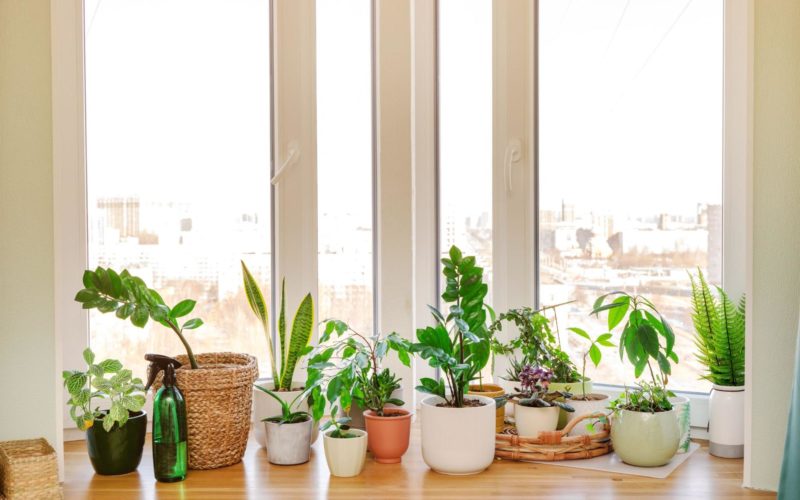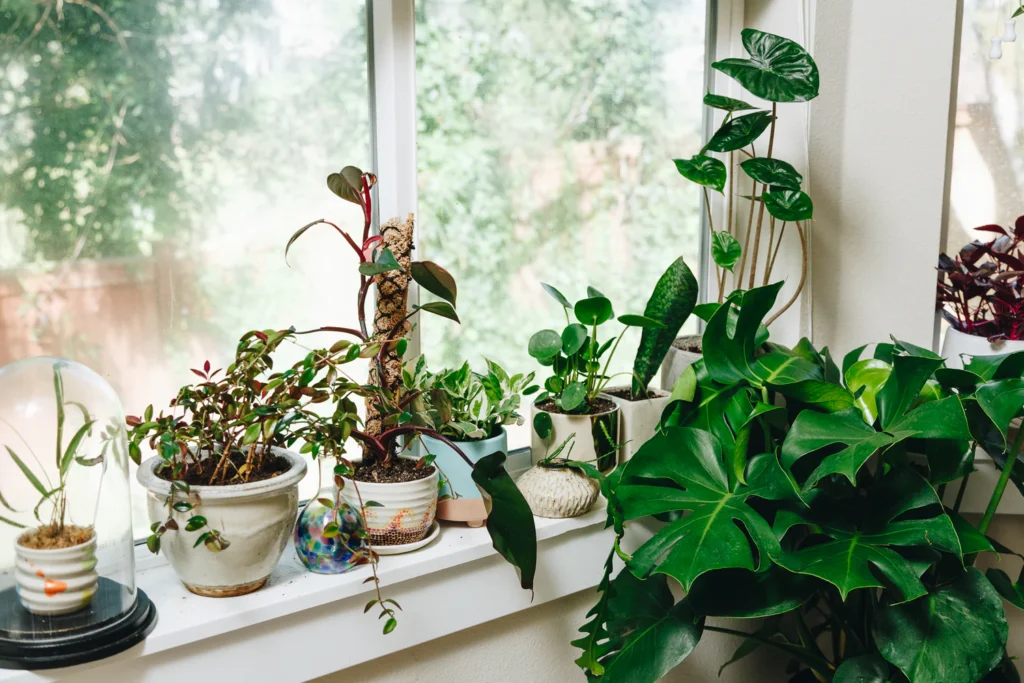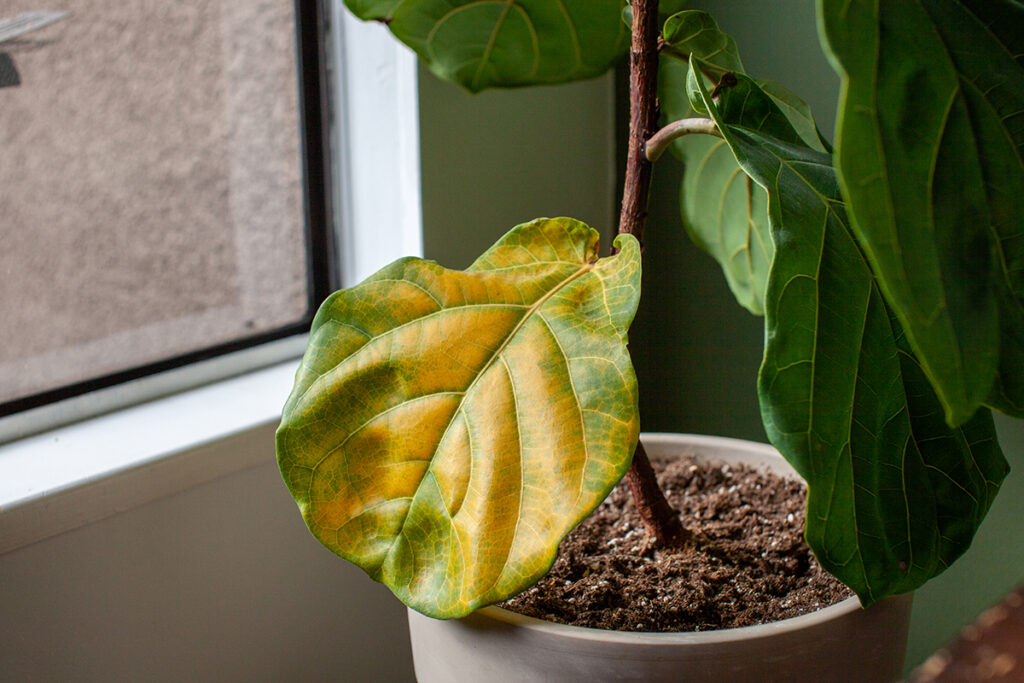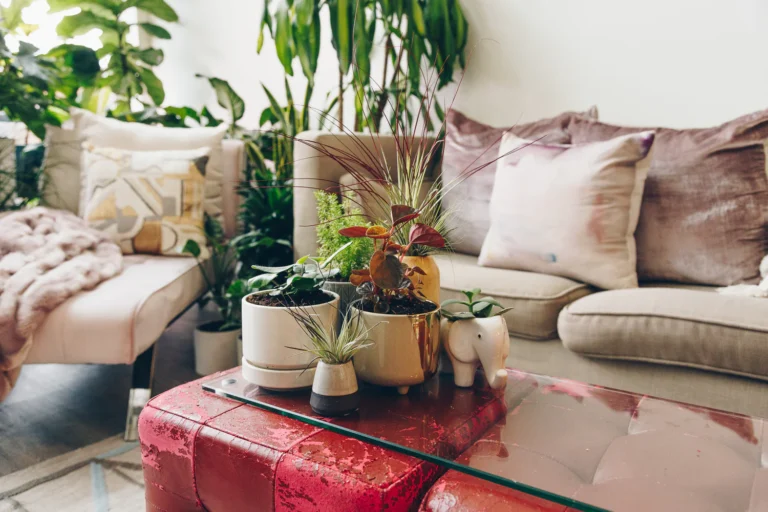Contents
Introduction
Ever noticed how your indoor plants seem to have their own mood swings with the changing seasons? One minute they’re thriving, soaking up the sun, and the next, they’re drooping and looking a bit under the weather. If you’ve ever wondered what’s behind these seasonal ups and downs, you’re in the right place.
Welcome to our guide on how seasonal light changes affect your indoor plants. We’re diving into why the changing daylight—from those long, sunny summer days to the shorter, dimmer winter ones—has such a big impact on your plant pals. It’s not just about the amount of sunlight they get; it’s also about how that light affects their growth, health, and overall happiness.
You see, plants aren’t just passive decor; they actually respond to light in ways that might surprise you. In the spring and summer, when the days are longer and brighter, your green friends might be basking in all that extra sunshine. But as the seasons shift towards fall and winter, the decrease in daylight can leave them feeling a bit low. Understanding these light changes can help you tweak your care routine so your plants stay vibrant and healthy all year round.
So, if you’re ready to become the ultimate plant whisperer and give your indoor garden the best care possible, keep reading. We’ll break down the impact of seasonal light changes, share tips on adjusting your plant care, and help you troubleshoot common issues. Let’s get your plants happy and thriving through every season!
Understanding Light Requirements
If you’ve ever wondered why some plants seem to thrive while others just don’t seem to get it right, it all comes down to light. Yes, that’s right—the type and amount of light your plants get can make all the difference between a lush, green paradise and a sad, droopy mess.

Basic Light Needs of Plants
First things first, let’s chat about what kind of light your indoor plants actually need. Plants have three main “light personalities”:
- Direct Light: This is like the VIP treatment for plants. They get to soak up sunlight directly from a window or a sunny spot. Plants that love direct light are usually the ones you find basking in those bright spots around your home. Think succulents and cacti—they crave that direct sunshine!
- Indirect Light: Not as intense as direct light, but still pretty great. This is light that comes through a window but doesn’t hit the plant directly. It’s filtered through curtains or bounced off walls. Plants like peace lilies and ferns are fans of this kind of light.
- Low Light: This is the dim, cozy corner of the light spectrum. If your plant is living in a spot with just a bit of natural light or under fluorescent lighting, it’s dealing with low light conditions. Snake plants and pothos are champs at handling this.
Light Intensity
Now, let’s talk about light intensity. Imagine light intensity as the strength of your plant’s sunlight drink. Strong light, like that summer sun pouring in through a south-facing window, can be invigorating. But too much of it can sometimes lead to sunburn. On the flip side, low light is like a gentle sip of sunlight—ideal for certain plants but not enough to fuel rapid growth.
Duration of Light
Plants are also tuned into how long the light sticks around. They have an internal “clock” that tracks the length of day versus night. This means that in the summer, when days are long and sunny, your plants might be growing faster and looking more vibrant. But come winter, with shorter days, they might slow down a bit and need a bit of extra help to stay cheerful.
Photosynthesis and Light
At the heart of it all is photosynthesis. This is how plants turn light into food, helping them grow and stay healthy. Think of it as your plant’s personal kitchen, where sunlight is the main ingredient. Without enough light, this process slows down, and plants can struggle to get the nutrients they need.
So, knowing your plant’s light needs and how they change with the seasons can make a world of difference. Adjusting where and how you place your plants, and maybe adding some supplemental lighting, can help keep them happy and thriving year-round.
Seasonal Changes in Light
If you’ve ever noticed that your indoor plants seem to have a bit of a seasonal mood swing, you’re not imagining things. Just like us, plants react to the changing seasons, and the way they respond to light throughout the year can really affect their health and growth. Let’s break down what happens with the light as the seasons change and how it impacts your plant buddies.

Spring and Summer Light Patterns
Spring and summer are like a plant’s personal vacation. The days are long, the sun is strong, and everything is blooming. Here’s what happens during these sunnier months:
- Increased Daylight: During spring and summer, your plants get to enjoy longer daylight hours. This means they’re basking in more sunshine, which is fantastic for their growth. More light translates to more energy for photosynthesis, so your plants will likely grow faster and look more vibrant.
- Intensity of Light: The sun is at its peak during these seasons, meaning your plants are getting hit with high-intensity light. This is great news for sun-loving plants that thrive in bright conditions. They’re getting all the energy they need to grow lush and strong. However, keep an eye out for signs of too much sun, like sunburned leaves or leaf spots.
Fall and Winter Light Patterns
As the seasons shift to fall and winter, things start to wind down. Days get shorter, and the light isn’t as intense. Here’s how these changes affect your indoor garden:
- Decreased Daylight: The most noticeable change is the reduction in daylight hours. Your plants are now getting less sun, which means their growth can slow down. This shorter light period can sometimes make them look a bit droopy or less vibrant.
- Low Light Challenges: With less natural light, your plants might struggle a bit to get the energy they need. This can lead to issues like leggy growth (where plants stretch towards the light) or slower growth overall. It’s a signal that they might need a little extra help to get through the darker months.
Understanding these seasonal light changes helps you make adjustments to keep your plants happy. It’s all about finding the right balance and making sure they get the light they need, whether that means moving them to a sunnier spot or adding some supplemental lighting.
So, as the seasons change, take a moment to observe how your plants are reacting to the light. Adjust their care as needed, and they’ll thank you with their vibrant, healthy growth all year long!
Adjusting Indoor Plant Care with Seasonal Changes
As the seasons change, so do the needs of your indoor plants. Just like you might adjust your wardrobe from summer to winter, your plants need a little tweaking in their care routine to stay happy and healthy throughout the year. Let’s dive into how you can make these adjustments to keep your green friends thriving no matter what the season throws at them.
Spring and Summer Care Tips
When the weather warms up and the days get longer, your plants are in their element. Here’s how to make the most of the spring and summer light:
- Positioning Plants: With all that extra daylight, your plants might be loving their sunny spots. Make sure they’re getting the most out of this sunshine by placing them near windows that get a lot of light. South-facing windows are usually ideal for plants that crave bright conditions. Just keep an eye out for signs of too much sun and adjust accordingly.
- Supplementing Light: Even with all the natural sunlight, some plants might still benefit from a little extra help. Consider using grow lights to enhance the natural light. These are especially useful for plants that need a bit more light than your home can provide. It’s like giving them a little extra sunshine boost!
- Watering and Humidity Adjustments: With increased light, your plants might be drinking up more water. Check the soil regularly and adjust your watering routine as needed. Summer also tends to be drier, so you might need to increase humidity for tropical plants. A simple humidifier or a pebble tray with water can do wonders.
Fall and Winter Care Tips
As the days shorten and the light dims, your plants might need a bit of extra TLC to adjust to the new conditions:
- Repositioning Plants: As natural light decreases, you might need to move your plants to brighter spots. Try placing them closer to windows or in locations where they can catch whatever light is available. If natural light is still lacking, it’s time to think about supplemental lighting.
- Using Grow Lights: Investing in some quality grow lights can make a big difference during the darker months. These lights mimic natural sunlight and can help keep your plants on track. Position them close to your plants to ensure they’re getting enough light.
- Adjusting Watering and Humidity: With reduced light, your plants will generally need less water. Overwatering can be a problem, so make sure to let the soil dry out a bit more between waterings. Also, indoor heating can lower humidity levels, so consider adding a humidifier or placing your plants on a humidity tray to keep them comfortable.
Adjusting your plant care routine to fit the seasons helps your indoor garden stay vibrant and healthy throughout the year. By paying attention to light changes and making these simple tweaks, you’ll ensure your plants continue to thrive no matter what the weather outside is doing.
Common Problems and Solutions
Even with the best care, plants can sometimes face a few hiccups, especially as the seasons change. Don’t worry if your indoor garden hits a rough patch—these common problems can be sorted out with a little know-how. Let’s look at some of the typical light-related issues you might encounter and how to fix them.

Signs of Light Stress
- Leaf Drop and Yellowing: If you start seeing leaves dropping or turning yellow, it might be a sign your plant isn’t getting the right amount of light. During the darker months, a lack of light can cause leaves to yellow and fall off as your plant struggles to photosynthesize. If you’re seeing this, it’s time to check the light situation. Move your plant to a brighter spot or consider using a grow light to give it a boost.
- Leggy Growth: Another sign that your plant might be struggling with light is leggy growth. This happens when your plant starts growing long, spindly stems with sparse leaves as it reaches for the light. It’s a classic indicator that your plant needs more light. Adjust its position to get it closer to a light source or add supplemental lighting to help it fill out.
Solutions for Light Stress
- Adjusting Light Exposure: If your plant is showing signs of light stress, the first step is to adjust its light exposure. Move it to a spot where it can get more natural light, or if that’s not possible, use a grow light to supplement. For plants that prefer indirect light, ensure they’re not in direct sunlight that could scorch their leaves.
- Enhancing Light Conditions: To keep your plant’s light levels optimal, consider adding artificial light sources if natural light is insufficient. Grow lights can be particularly effective. Choose ones that mimic the spectrum of natural sunlight and place them close to your plants. A good rule of thumb is to position the light a few inches above the plant and adjust the distance as needed based on the plant’s response.
Regularly check your plants for any signs of stress and adjust their care as needed. With a little bit of attention and some simple fixes, you can keep your indoor garden looking its best all year round.
Remember, every plant is different, so what works for one might not work for another. Observing and adjusting based on your plant’s unique needs will help you create a thriving indoor garden no matter the season.
Tools and Resources
To keep your indoor plants looking their best through every season, having the right tools and resources at your disposal can make a huge difference. From enhancing light conditions to monitoring plant health, here are some handy tools and resources to help you become a plant care pro.
Grow Lights
When natural light just isn’t cutting it, grow lights are your go-to solution. These lights are designed to mimic the sun’s spectrum, giving your plants the extra boost they need to thrive indoors. Here’s what to look for:
- Types of Grow Lights: There are several types of grow lights, including LED, fluorescent, and incandescent. LED lights are popular because they’re energy-efficient and long-lasting. Fluorescent lights are great for low-light plants and are often more affordable. Incandescent lights can be used but tend to be less efficient and can get quite hot.
- How to Use Grow Lights: Position your grow lights a few inches above your plants and adjust the height as they grow. Most plants benefit from 12-16 hours of light per day, but this can vary based on the type of plant and its light needs. Make sure to follow the instructions for your specific grow light to get the best results.
Light Meters
Ever wondered just how much light your plants are getting? A light meter can give you a precise measurement. These handy tools measure light intensity, helping you determine if your plants are in the right spot or if they need more light.
- How to Use a Light Meter: Simply place the light meter where your plant is located and take a reading. Compare this with the light requirements of your plant to see if it’s getting enough light. This is particularly useful during the darker months when light levels can drop.
Plant Care Apps and Resources
Staying on top of plant care can be easier with the right apps and resources. There are plenty of tools out there to help you track your plant’s needs and get tips on how to keep them healthy.
- Recommended Apps: Apps like Planta, Garden Answers, and Floranext can provide personalized care tips, reminders, and even identify plant problems. They often include features like light and watering reminders, which can be a lifesaver for busy plant parents.
- Books and Online Guides: There are countless books and online resources dedicated to indoor plant care. Look for ones that offer practical advice and cover a wide range of plant types. “The House Plant Expert” by Dr. David Hessayon and “Houseplants for All” by Lisa Eldred Steinkopf are great places to start.
Having the right tools and knowing where to find reliable information can make plant care much more manageable. Equip yourself with these resources, and you’ll be well on your way to keeping your indoor garden healthy and thriving all year round.
Conclusion
So there you have it—everything you need to know about how seasonal light changes can impact your indoor plants and what you can do to keep them thriving all year long. It’s clear that light plays a huge role in your plant’s health and happiness, and by understanding these seasonal shifts, you can ensure your green friends are always in their best condition.
Recap of Key Points
To recap, as the seasons change, so does the light your plants receive. In spring and summer, with longer and more intense daylight, your plants will likely be growing like crazy. Just make sure they’re getting enough light and adjust watering and humidity as needed. When fall and winter roll around and the days get shorter, your plants might need a little extra help. Reposition them to catch any available light, use grow lights to boost their sunshine, and adjust your watering routine to match their reduced needs.
Encouragement to Adapt
Remember, plant care isn’t a one-size-fits-all deal. Each plant has its own preferences and needs, so it’s important to keep an eye on how your plants respond to these seasonal changes. Don’t be afraid to experiment with light positions and adjustments to find what works best for each plant. With a bit of attention and care, your indoor garden can stay vibrant and healthy no matter what the weather outside is doing.
Thanks for joining us on this journey to becoming a more informed and attentive plant parent. Armed with this knowledge, you’re ready to tackle seasonal changes and keep your indoor plants looking their best all year round. Happy planting!



